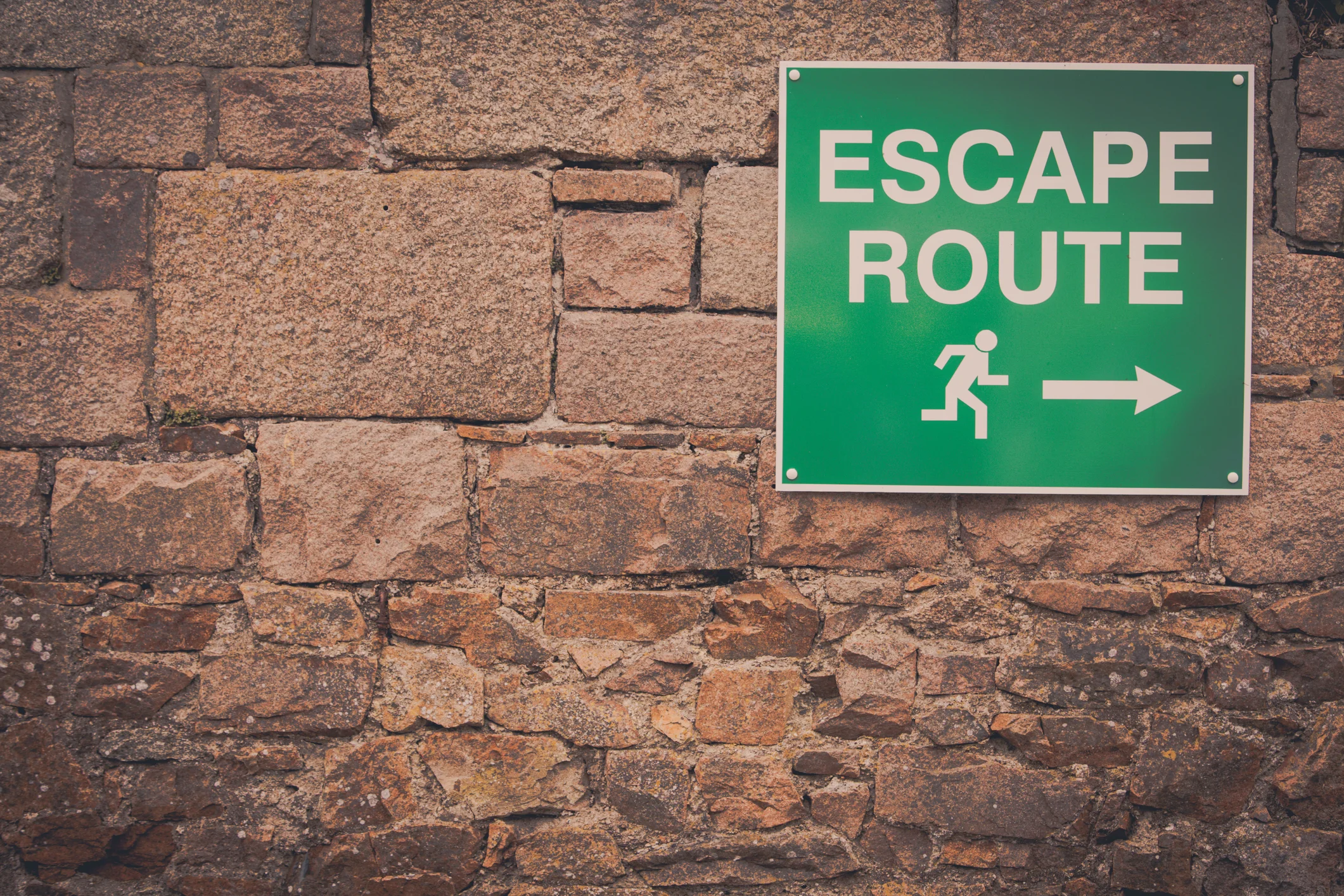The following is an excerpt from Chapter 2, Breaking the Cycle of Attachment Thinking from my book, WTF?!...How am I thinking?. This section is on Escape Routes, what we normally do to break cycles of negative emotions such as fear, stress, anxiety, anger and frustration and other related thought patterns such as "I'm not good enough", "something is wrong with me", that show up in Attachment Thinking.
While we try to get out of the emotions and thought patterns that we generate in this kind of thinking through escape routes (listed below); they do not work in the long run as they are temporary tranquilizers or solutions. They do not break the cycle; they suspend it before we return back into Attachment Thinking or a negative cycle again. As such, escape routes are never a solution.
The only solution therefore is to break the cycle of Attachment Thinking as this is the source of negative cycles, emotions and thought patterns. We can do this through awareness of what we are doing and what shows up when we do this kind of thinking. With this awareness we can also return back to ourselves and our natural state, trust, and a different kind of thinking, Reflective Thinking.
Awareness and returning back to ourselves can be done through using the two thinking tools for change which are available in my new online course, Change Your Thinking, Change Your Life. If you are interested in learning about the course, what you get in it and would like to enroll, please go here.
I hope that you enjoy this post on Escape Routes as it can be used as a checklist in your daily life, i.e. if you find yourself in any of the escape routes, you know you are doing Attachment Thinking.
How We Try to Break Free
"When we are in Attachment Thinking, we think there is no way out. We are stuck and trapped in our emotions, our thinking and whatever is showing up. We go looking for an escape route, a reference point to change or get out of the present experience and/or emotion. We think that the escape route will change our thinking and way of being as well as our emotions (stress, anxiety, fear, anger, depression, sadness etc). The normal escape routes are: meditation, overeating, drugs, alcohol, cigarettes, retail therapy, sex, work and over-exercising.
Another escape route is the search for ‘it’. Normally in Attachment Thinking we want to run from our emotions or what is showing up, so we go looking for another emotion. We search for ‘it’. The ‘it’ is external to us, it’s ‘out there’ somewhere. It is an external reference point that gets us from here to there, i.e., what we want to run from, to where we think the emotions are going to be. The emotions could be peace, happiness, love or excitement.
Alternatively, we may want to search for ‘it’ to fill the hole, the void, and the emptiness in our lives as we live in loneliness, isolation and separation.
When we find ‘it’ and get this other emotion, this will fulfill us. It is a tranquilizer. All of the escape routes are tranquilizers. However, the tranquilizers do not last long and then we find ourselves back in Attachment Thinking again. And so the cycle of Attachment Thinking begins again including the escape routes. What is interesting to note is that escape routes are also addictions. We become addicted to the feeling; the emotion that the addiction gives us.
When we use these escape routes, we normally come back to ‘Being’, however this way of Being is forced, thus it is not our natural state. Furthermore, in this state, Being, we cannot be productive and active in our lives. It doesn’t work and so we cycle back to Attachment Thinking as this is what we are familiar with despite the fact it is destructive and delusional. It is a vicious circle that simply doesn’t work. Autonomy, the middle point between Attachment Thinking and Being, the key to balance in our lives, is therefore the answer.
There is no struggle or effort involved in Autonomy, our natural state, trust. This makes living effortless. We are not controlling ourselves, others or life in general in Autonomy. We live in an active flow of life in the present.
In order to become aware of the habitual unconscious thinking that is Attachment Thinking, break the cycle and move into Autonomy (Reflective Thinking) and our natural way of being, trust, two thinking tools are needed to do that. These are only available either through my new online course Change Your Thinking Change Your Life or through purchasing a copy of my book, WTF!?…How am I thinking? here.
If you would like to receive more valuable content on what shows up when we do Attachment or Reflective Thinking or other relevant news, please subscribe below.
I am available for one on one consulting via email or phone (+64 221966928), workshops and speaking.
** Please feel free to ask any questions, leave a comment below or share this with others who you think would benefit from this post.

